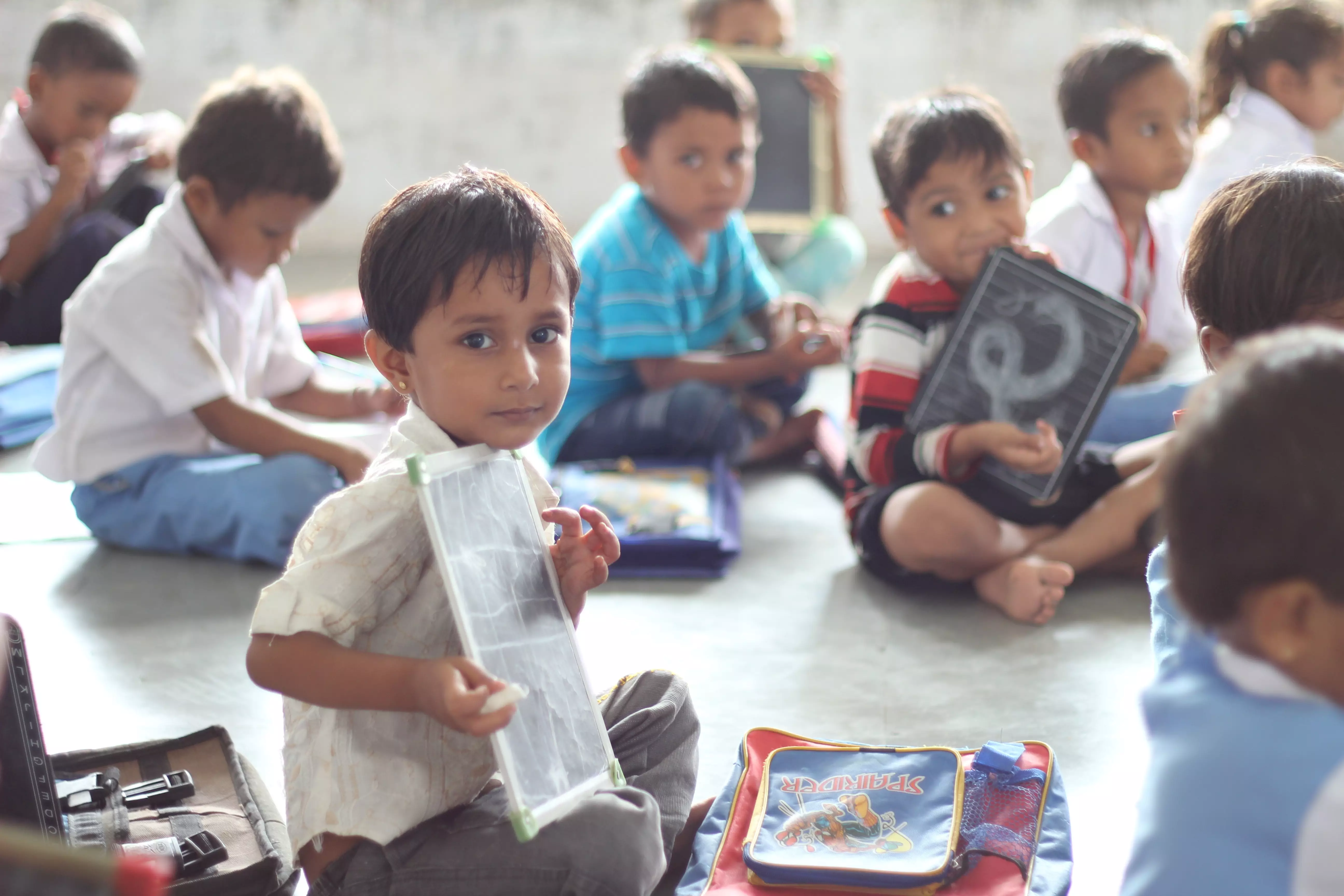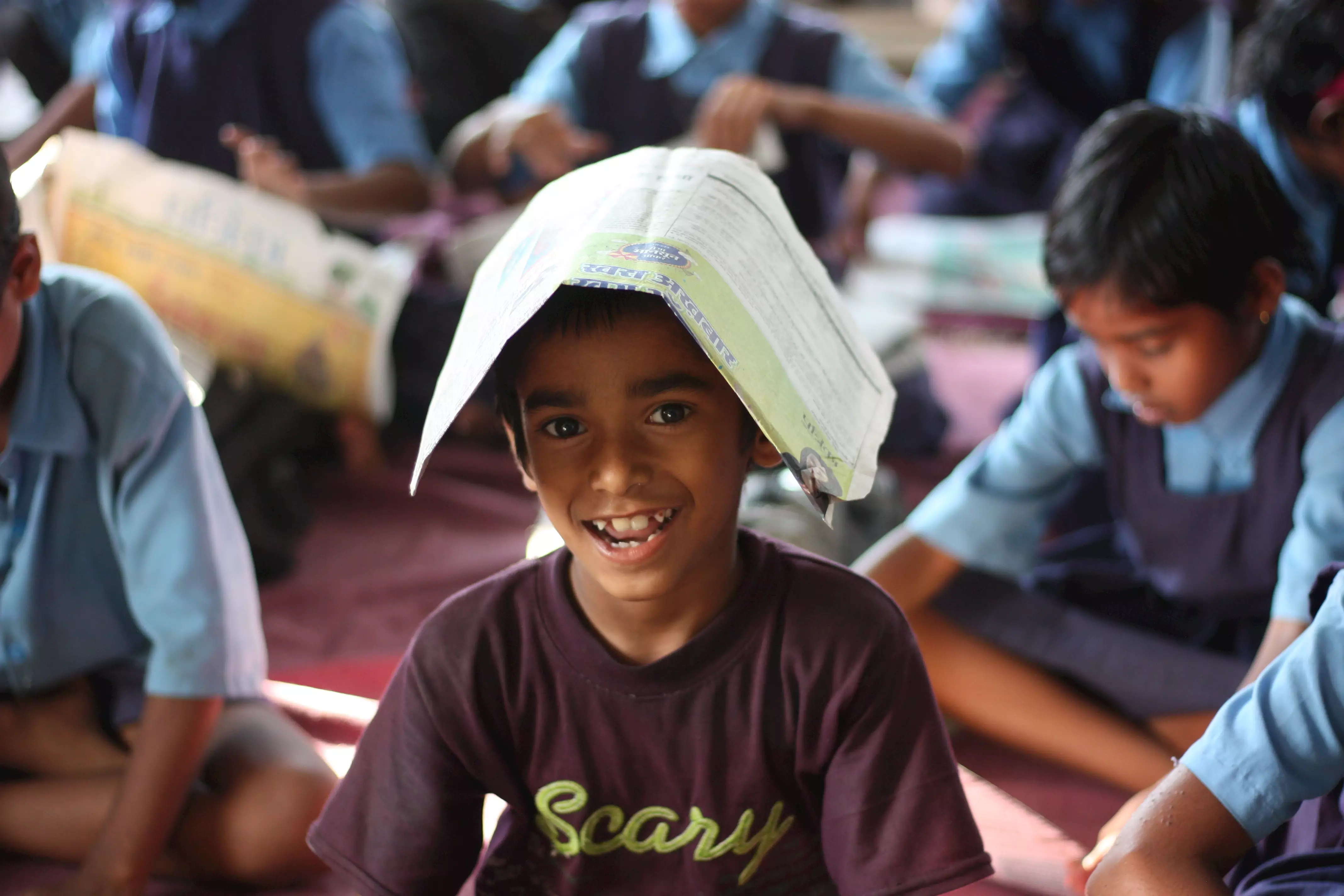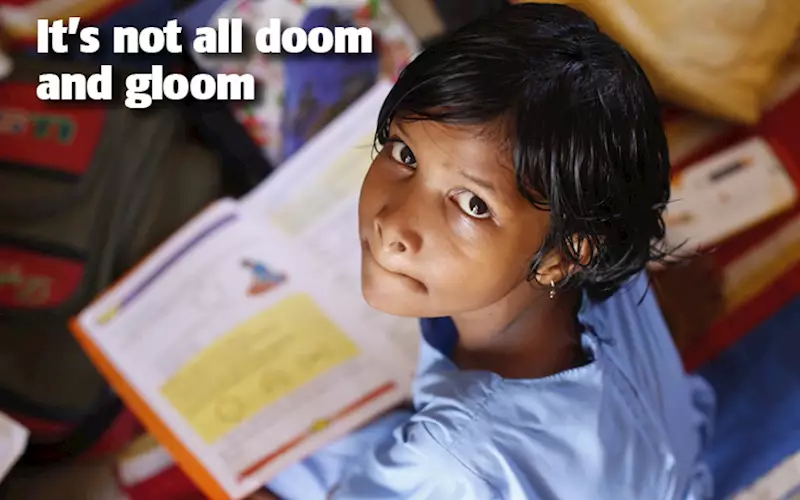It’s not all doom and gloom - The Noel D'Cunha Sunday Column
A lot has changed dramatically in the past weeks. The Coronavirus pandemic has resulted in tragedy and hardships for many. But some people are picking up the humble printed book - and reading.
In this Sunday Column, we look at the textbook sector, and crunch some numbers in key states
19 Apr 2020 | By Noel D'Cunha
It's 2100. You're a technology expert. And you have been asked to write for a new history textbook for 8th standard and their digital equivalents. What's your first reaction? Books are extinct!
Well, 12 years ago, at the World Economic Forum in Davos something similar happened. A futurologist was one of the speakers. He argued that there would be four major trends that will drastically change humanity over the next 15 years. The first was oil at USD500 a barrel. The second was that water like oil would become a commercial product and be traded on the stock market. The third was the inevitability of Africa becoming a superpower. Something many people on the planet would like to see. The fourth trend, according to this expert was the disappearance of the printed book.
The expert was greeted with thunderous applause. Not one person questioned the expert whether the permanent eclipse of the book should take place? After all, can the disappearance of a book have the same consequences for humanity as the predicted shortage of water or affordable oil?
And so, in this lockdown phase where most stalwarts are mourning the loss of print; it’s not all doom and gloom with the domestic Government textbooks – NCERT and other state boards.
How so?
NCERT had one of the biggest production plans (ever) for this academic year. When we spoke to the head of a publishing veteran, she said, “Only 60% of the NCERT orders have been completed when the lockdown was announced.” Our sources say, senior officials are taking steps to make payments for the delivered quantity of books. More importantly, what we have learnt is, “The season is going to be extended and there should be work for two months, after opening."

In Tamil Nadu, about 50% of the textbook work has been completed
Even as the Sunday Column is being published on 19 April 2020, NCERT was to open their administration department to make payments to printers (*Confirmation is awaited).
The point is, many print firms may have mothballed their own facilities but they need to be prepared. Our printing industry is a “decisive barometer for the economic health of every other sector of our economy” and it is intrinsically linked with each of India’s major industrial bases.
Above all, print is the backbone of our education system.
The state of books in various states
And so, on the one hand, there is talk of companies opting for voluntary liquidation and others being impacted with a dramatic drop-off in order levels, textbooks are being produced. A senior printer in Kolkata told us, “The West Bengal textbook value-chain is intact. This is because schooling follows the calendar year. Books have been printed and distributed."
However, in Bihar, the textbook work was to be distributed among the firms who bagged tenders last year – PrintWeek has learnt from its sources in Patna that this has not happened. And since the book printers procure paper, print and other consumables, plus distribute there could be delays.
Meanwhile, my colleague in Chennai, Sriraam Selvam says, in Tamil Nadu, about 50% of textbook work has been completed. Some of the printers in Chennai are beginning work even as you are reading this, with special permissions. (Look out for PrintWeek’s Chennai special print sector feature in the May 2020 issue).
In Karnataka too, textbook work has begun, when the lockdown was declared by the Prime Minister on 24 March 2020. It is work in progress for 3.8-crore textbooks. As yet, no supplies have begun.
In Uttar Pradesh, my colleague Rahul Kumar says, it is one of the largest states in terms of the number of books. The textbook work has been allotted to major book players like Green World, Pitambara, Oyster etc. According to Rahul Kumar, “work has not begun in UP.”
In PrintWeek’s home state of Maharashtra, due to the modification of syllabus plus approvals, there was a gap in print production in months of January and February. About 60% of the work has been completed and supplied for which the printers have received payment. (Please note: this textbook work was complete in December). The supplies for March have not been completed or billed.

In Karnataka, it is work in progress for 3.8-crore textbooks
Meanwhile, the status report for Chhattisgarh is 40% of the work is complete. Even as I am preparing this report, I hear that textbook printing work has resumed. Please read the February issue cover story on Chhattisgarh here
In Gujarat (my print beat), the reports suggest, that a substantial amount of work is complete. Likewise in Andhra Pradesh, most of the books for the eighth to tenth standards have been completed. The state government made an announcement that it will replace “Telugu as a medium of instruction for classes 1-7 in all government schools in the state with English”. This decision was widely criticised on the ground that there isn’t adequate infrastructure to implement the decision across. It was challenged in the court. The Andhra Pradesh High Court on 15 April quashed the state government’s compulsory English medium in schools order.
In anticipation of starting this work, the AP government had announced that textbook printers can begin work this week. But the court directive means 70% of the job is pending. Our sources in Hyderabad have told us, 8-10 standard textbook work is “more or less done".
Meanwhile, in the North-Eastern states, the work has been completed – but none of the printers have received payments.
The reason I have stated this in the Sunday Column is, industry associations in these regions must call upon the local government officials to create a “recovery path for textbooks”. Focus on the specifics and not some treasure at the end of the rainbow. This will help print businesses in your city get back on track once the virus crisis has passed.
Solid foundation in the post-lockdown phase
95% of Indian printers have shuttered their operations due to the virus crisis. A few we spoke to after 21-days were enquiring if work could be diverted to print specialists. Packaging players were pooling resources for in-demand items. Newspaper plants were working with a smaller, nimble taskforce.

In Maharashtra, about 60% of the work has been completed and supplied for which the printers have received payment
PrintWeek spoke to P Sajith, director at Impel-Welbound to understand the major takeaways as well as challenges and opportunities vis-à-vis government textbook printing.
Sajith shared with us, “Government textbook printing work happens in three broad models.” Model one is where the state government procures the paper and the print firm takes care of printing and logistics. This transpires in Maharashtra and Andhra Pradesh.
Model two is when the government allots specific books to a print firm. This business procures paper, produces books and supplies the textbooks to the designated locations. In this case, the payment is made by the government, for instance, Karnataka.
Finally, there is the third model wherein, in addition to what is done in model two, the payment is collected by the printers from the market (schools, distributors, local bodies). This is a business model in UP and Bihar.
Sajith says, “The order of difficulty increases from model one to model three, in times like we are facing today.
While a few state textbook boards have completed the project for the academic year, “many printers are yet to receive payments”. Our source told PrintWeek, “The NCERT is trying to help out. But in most cases, the State Governments do not have the resources to survive the Covid-19 pandemic. They are diverting funds to health care. This money was meant for paying printing presses for their (more) pressing needs.”
Paper supply is not an issue (especially uncoated paper which is deployed for textbooks) as most Indian paper mills have been operational. As per our reports, most manufacturers of plates, inks and adhesives have revved up their factories at a minimum of 30% capacity with the help of workers from the local zone.
Suresh Shah, director at Mumbai’s Nulith Graphics said: “It’s a great shame because a lot of people were looking forward to having a good year, what with 2020 being the Interpack and Drupa year. Now the whole thing has been knocked off course.”

In AP, 8-10 standard textbook work is “more or less done”, that 30% of the work, the other 70% is pending following a court directive
Economics and humans
Cashflow is going to be the biggest point for discussion. Margins will take second place. One of the webinars I attended said, “The need of the hour will be prudent cash management. Other cash actions include reductions in Capex, net working capital and discretionary costs. Most PrintWeek 100 firms are hoping to maximise their liquidity position and capital structure. It is the only way to absorb an extended period of uncertainty.
Sajith says, a big concern is, many printers have not received the payments. Therefore they have not paid their suppliers – since the lockdown.” This can have an impact on supplies once production starts up.
A lot of textbook work depends on migrant contract labour. Some of the printers have managed to hold staff – by housing them in their presses or nearby. But many of the key workers have exited for their hometowns. Now, without the restarting of interstate movement of people, the printers will struggle. Besides, there are some reports which speculate that it could be possible that workers who have returned home, may reassess the option of a return to work, far away from their homes, after what they have had to undergo.
Some parts of the printing industry, such as food and pharma packaging, remain as busy as or busier than usual. But the government-mandated shutdown of retailers, restaurants, leisure facilities and the property market has had a huge impact on printers.
Even as you are reading this, it’s staggering to imagine only 15% of presses are running at “normal levels”.
There is unprecedented pressure being experienced by the industry. Things look bleak and it reflects the fact that the economy has been shut down and the sectors that have been instructed to close represent a significant part of the printer’s client base.
In all this doom and gloom, textbooks offer a glimmer of hope.
RBI Governor’s economy boost “too little”
 The IMF’s Economic Counsellor has named it the ‘Great Lockdown’. The estimates are a cumulative loss to global GDP over 2020 and 2021 at around USD 9 trillion – greater than the economies of Japan and Germany, combined.
The IMF’s Economic Counsellor has named it the ‘Great Lockdown’. The estimates are a cumulative loss to global GDP over 2020 and 2021 at around USD 9 trillion – greater than the economies of Japan and Germany, combined.
Even as I was creating this report, there was a briefing by the RBI Governor. He announced a Rs 50,000 crore booster package for SMEs. Also, he said, the reverse repo rate is being reduced from 4% to 3.75%.
The governor, Shashikanta Das promised to ease financial stress and enable formal functioning of markets.
The point is, there is significant uncertainty. Is it fair to latch on to baseline GDP estimates – what with 15-25% higher working capital which is needed for SMEs? The industry leaders I spoke to felt the boost is “too little”.
He added, “A booster to an SME is giving him an additional debt, many may survive a bit longer. Others may live longer to fight another day. So it is difficult to say how much or how much is too little. In any case, it won’t impact our industry.”
While PrintWeek remains bullish on books, representatives who gave us feedback say it is going to be tough, for print businesses exposed to hospitality, retail and leisure. The main thing in on everyone’s mind is how to adapt and flex those financial muscles.
These are times when you have to keep grabbing, keep working and keep hoping.
Note: Pictures are representational.











 See All
See All